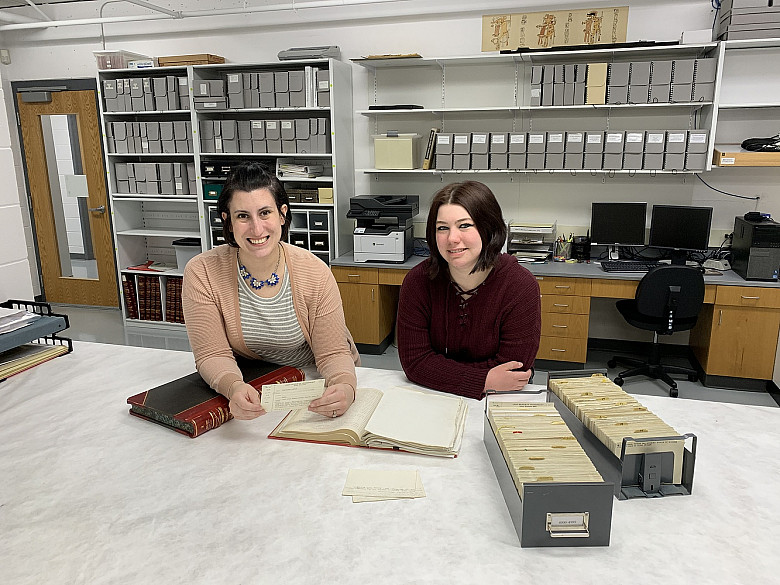Museum Monday: Bioarchaeology and NAGPRA at the Logan Museum
The Native American Graves Protection and Repatriation Act (NAGPRA) is a federal law enacted in 1990 that provides a process by which certain material, including human remains and funerary objects, may be repatriated, or returned, to Native American tribes. The Logan Museum curates hundreds of objects subject to NAGPRA, and its staff and students have been working with tribes on repatriation since the law’s passage.
NAGPRA compliance often involves specialized knowledge and approaches, including bioarchaeology. Bioarchaeologists study human remains from archaeological contexts. In 2018, the Logan hired bioarchaeologist Helen Werner to assist with NAGPRA compliance. Helen is looking at remains for biological traits that, coupled with museum documentation and tribal consultation, show evidence of Native American ancestry.
Helen recently analyzed a human skull that museum records identified as “Plateau: Flathead.” The skull of this individual had been culturally modified. This means that at some point during the person’s life, a board or some other hard object was strapped to the head in a way that changed the shape of the skull. There are many reasons why this happens: some people do this for beautification, some for status, and with others it occurs naturally when strapped to a cradle board in infancy. Biological assessment indicated that this individual is of Native American origin and based on the museum’s documentation, one might presume the skull was affiliated with the Flathead tribe. However, Helen’s research indicates that the Flathead performed a different type of skull modification. It’s possible that the skull was labeled “Flathead” simply because of the cranial modification. Through tribal consultation, the museum hopes to learn more about cranial modifications to be able to be affiliate this individual with a present day tribe.
Anthropology student Haley Michael’19 has been working closely with Helen to apply her bioarchaeology coursework to NAGPRA compliance efforts. Together, Helen and Haley analyzed several cremations from the Southwestern United States, each of which contained hundreds of tiny bone fragments. They spent many hours looking for fragments big enough to identify as coming from particular parts of the human body. In particular, they were looking for cranial fragments and teeth. Certain non-metric cranial traits are more likely to be present in individuals of Native American or Asian ancestry than in individuals of European or African ancestry. Identifying the fragments also helped them determine the minimum number of individuals in the cremations. As a result of this collaboration, Haley is gaining invaluable experience making connections between biological analysis, museum documentation, and background research.
Anthropology museums are themselves artifacts of the eras in which their collections were assembled. In the late 19th and early 20th centuries, museums collected human remains as curios, as documentary evidence of “vanishing Indians,” and as racial types used to justify white supremacy. For these reasons, many museums, including the Logan Museum, view NAGPRA compliance as human rights work. Tribal consultation is now the norm rather than the exception. Compliance efforts are ongoing at the Logan Museum and will be for years to come.



